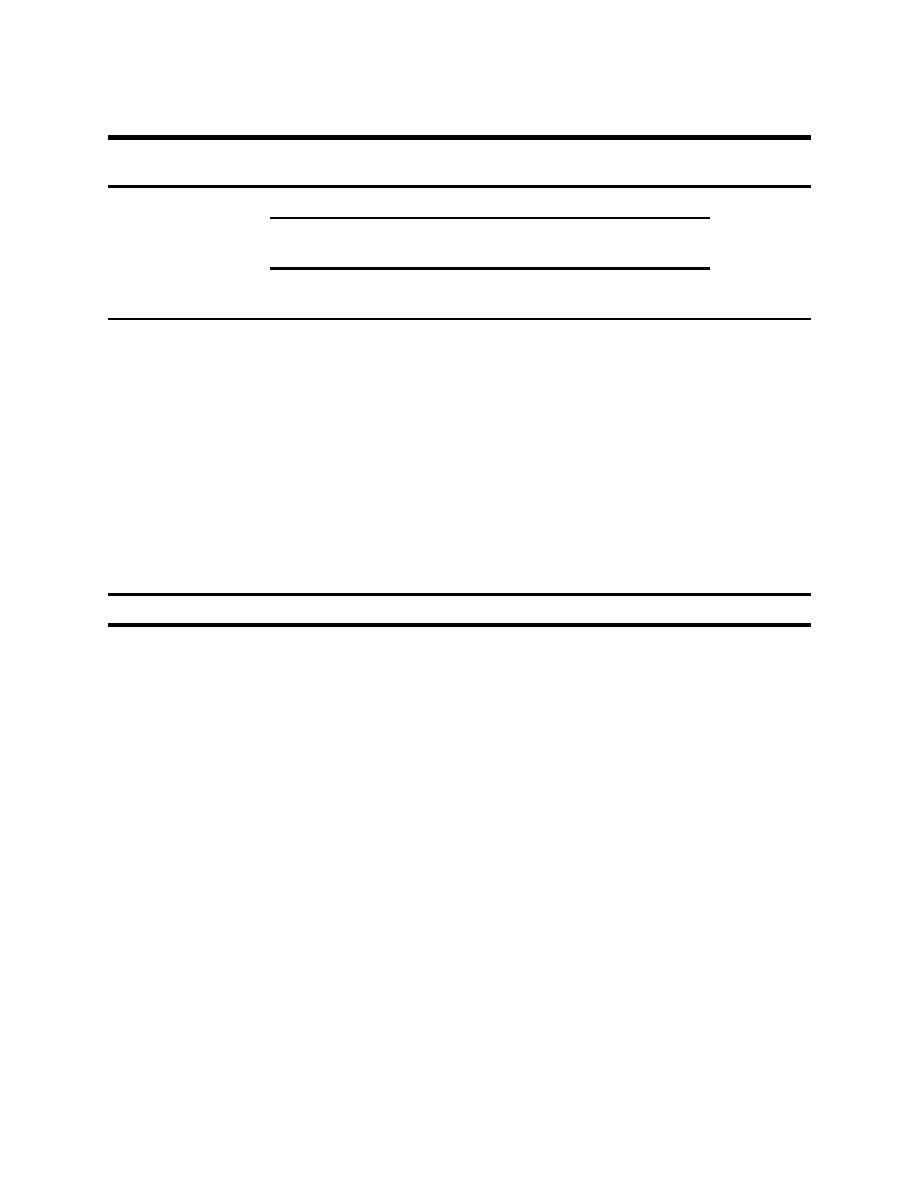
UFC 3-260-02
30 June 2001
Table 11-5
Grouping Traffic into Traffic Groups According to Similar Asphalt Moduli
Modulus Values, kips per square inch
For Computation of
For Computation of Subgrade
Asphalt Damage
Damage
Monthly
Group
Monthly
Percent of
Values
Average
Values
Group Average
Total Traffic
Group
Month
Jan
1,500
1,270
Dec
1,400
1,390
1,200
1,180
25.0
1
Feb
1,270
1,060
Nov
1,000
720
2
960
710
16.7
Mar
920
700
Apr
570
420
3
Oct
540
490
380
400
25.0
May
360
250
260
190
Sep
220
160
Jun
210
150
33.3
4
180
130
Jul
180
130
Aug
Conversion Factors: megapascals = 6.894 kips per square inch
flexible pavement system, the rough computational procedure is sufficiently accurate. The subgrade
vertical strain is computed at the top of the subgrade layer and under the center of one of the tires and
midway between the tires. The maximum strain is found to occur under the tire. Results of computer
runs for the example problem are shown in Table 11-7.
(2) A similar set of runs is made for the computation of the horizontal strain at the bottom of the
asphalt layer. This set of runs will use the asphalt moduli determined for consideration of asphalt strains
and given in Table 11-5. For computing the strains for the runway design, the load and contact area are
reduced by 75 percent. The resulting tire loading is 11,850 kilograms (26,125 pounds) applied over a
circular contact area having a radius of 248 millimeters (9.77 inches).
d. Step 4 - Determination of Applied Repetitions.
(1) The design is for 200,000 passes of the aircraft over the life of the pavement. The
pavement life has been divided into four periods as shown in Table 11-5. Considering that the traffic is
to be equally distributed throughout the year would result in 25, 16.7, 25, and 33.3 percent of the traffic
to be applied in the first, second, third, and fourth periods, respectively.
(2) The 200,000 passes will result in a total number of effective strain repetitions that will be a
function of transverse location on the pavement and on the depth at which the strain is being considered.
11-14



 Previous Page
Previous Page
